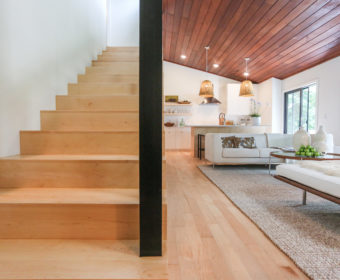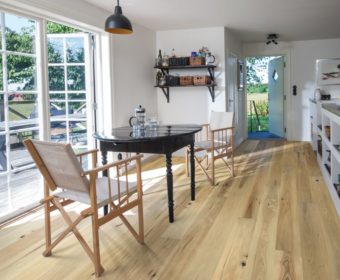When it comes to wood flooring, there are a number of different grading systems that are used to classify the quality and appearance of the wood. Understanding these grades can be helpful when selecting a wood floor for your home or business, as it can give you a better idea of what to expect in terms of appearance and durability. In this blog, we’ll take a closer look at the different wood flooring grades that are standard in the industry.
Clear Grade
The highest grade of wood flooring is clear grade, which is also sometimes called select grade. This grade is characterized by a uniform appearance, with very few knots or other natural imperfections in the wood. The wood is also free of defects such as splits, checks, or wormholes. Clear grade wood flooring is typically the most expensive, as it requires careful selection and processing to achieve its uniform appearance.
Select and Better Grade
Select grade wood flooring is similar to clear grade but may contain a few more natural imperfections in the wood. This can include small knots, mineral streaks, and other variations in color and texture. Overall, select grade wood flooring is still quite uniform in appearance, but may have a bit more character than clear grade wood flooring. Select grade wood flooring is a popular choice for those who want a high-quality wood floor with some natural variation.

#1 Common Grade (Character)
#1 common grade wood flooring, also called character grade, is characterized by a more natural appearance with a greater variety of color and texture. This grade may contain knots of varying sizes, mineral streaks, and other natural imperfections. While #1 common grade wood flooring may not be as uniform in appearance as clear or select grade wood flooring, it can be a great choice for those who want a wood floor with more character and personality.
This option is most used across the industry for its standard pre-finished flooring.
#2 Common Grade (Rustic)
#2 common grade wood flooring, also called rustic grade or cabin grade, is the lowest grade of wood flooring. This grade is characterized by a very rustic, natural appearance with a wide variety of color and texture. The wood may contain large knots, mineral streaks, and other natural imperfections. While #2 common grade wood flooring may not be as uniform or refined as higher-grade wood flooring, it can be a great choice for those who want a very natural-looking wood floor.

Other Grading Systems
While the grading systems we’ve described above are the most common in the wood flooring industry, there are also several other grading systems that may be used by individual manufacturers. These grading systems can vary widely in terms of how they classify the quality and appearance of the wood. Some manufacturers may also offer proprietary grading systems that are specific to their products.
It’s also worth noting that the grading of wood flooring can be somewhat subjective. While certain standards and guidelines exist to help classify the wood, there is still some room for interpretation and variation. This means that two different manufacturers may produce wood flooring with the same grade designation, but the appearance and quality of the wood may still be somewhat different.
Conclusion
When selecting a wood floor, it’s important to consider the different grades of wood flooring that are available. Clear grade wood flooring is the highest-quality and most uniform, while select grade wood flooring is similar but may have more natural imperfections. #1 common grade wood flooring has a natural appearance with some variation in color and texture, while #2 common grade wood flooring is the most rustic and natural-looking. By understanding the different grading systems and what they represent, you can choose a wood floor that meets your needs and preferences in terms of appearance, durability, and cost.
